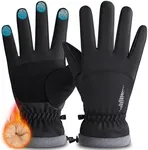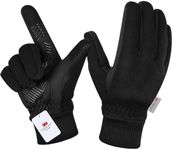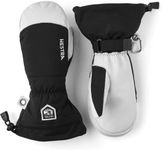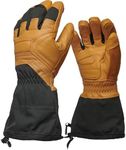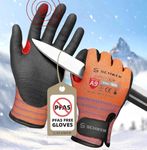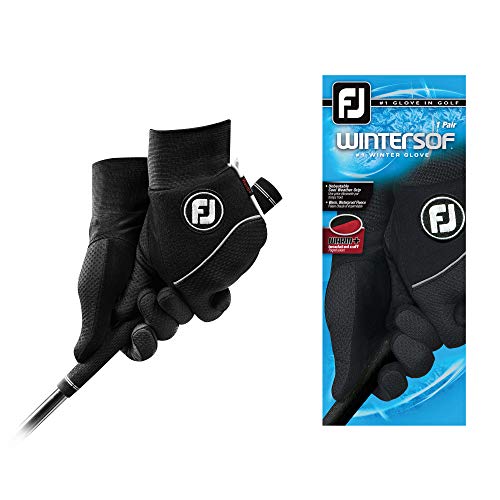Buying Guide for the Best Winter Gloves For Extreme Cold
When it comes to choosing winter gloves for extreme cold, it's essential to focus on the key specifications that will ensure your hands stay warm, dry, and comfortable. The right pair of gloves can make a significant difference in your outdoor experience, whether you're skiing, hiking, or simply braving the cold weather. Here are the key specs to consider and how to choose the best fit for your needs.InsulationInsulation is the material inside the gloves that keeps your hands warm by trapping heat. This is crucial for extreme cold conditions. Common types of insulation include down, synthetic fibers, and fleece. Down insulation is very warm and lightweight but can lose its insulating properties when wet. Synthetic insulation, such as Thinsulate, is also warm and retains heat even when wet. Fleece is soft and provides good warmth but may not be as effective in extreme cold. Choose down for maximum warmth, synthetic for wet conditions, and fleece for moderate cold.
WaterproofingWaterproofing ensures that your gloves keep your hands dry in wet conditions, which is vital for maintaining warmth. Waterproof gloves typically have a membrane like Gore-Tex or a waterproof coating. These materials prevent water from entering while allowing moisture from sweat to escape. For extreme cold, look for gloves with a high-quality waterproof membrane to ensure your hands stay dry and warm.
BreathabilityBreathability refers to the glove's ability to allow moisture from sweat to escape. This is important because trapped moisture can make your hands cold. Breathable gloves have materials that let moisture out without letting water in. If you plan to be active in extreme cold, such as skiing or hiking, choose gloves with high breathability to keep your hands dry and comfortable.
DexterityDexterity is the ability to move your fingers easily while wearing the gloves. This is important for tasks that require precision, like adjusting gear or using a phone. Thicker gloves with more insulation may reduce dexterity, while thinner gloves offer better movement but less warmth. Consider your activities and choose gloves that balance warmth and dexterity according to your needs.
FitFit refers to how well the gloves conform to your hands. A good fit is essential for comfort and warmth. Gloves that are too tight can restrict blood flow and make your hands cold, while gloves that are too loose can let cold air in. Measure your hand size and refer to the manufacturer's sizing chart to find the right fit. Try on the gloves if possible to ensure they are comfortable and allow for some movement.
DurabilityDurability is the glove's ability to withstand wear and tear. This is important for long-term use, especially in harsh conditions. Look for gloves made with high-quality materials like leather or reinforced synthetic fabrics. Durable gloves will last longer and provide better protection against the elements. If you plan to use the gloves frequently or in rugged conditions, prioritize durability.
LiningThe lining is the inner layer of the gloves that comes into contact with your skin. It adds an extra layer of warmth and comfort. Common lining materials include fleece, wool, and synthetic fabrics. Fleece and wool are warm and soft, while synthetic linings can offer moisture-wicking properties. Choose a lining that feels comfortable against your skin and provides the level of warmth you need.
Cuff StyleCuff style refers to the design of the glove's wrist area. It can be short or long, with or without closures like Velcro or elastic. Long cuffs provide better protection against snow and wind, making them ideal for extreme cold. Short cuffs offer more freedom of movement and are easier to tuck under jacket sleeves. Choose a cuff style that suits your activity and preference for protection and mobility.


